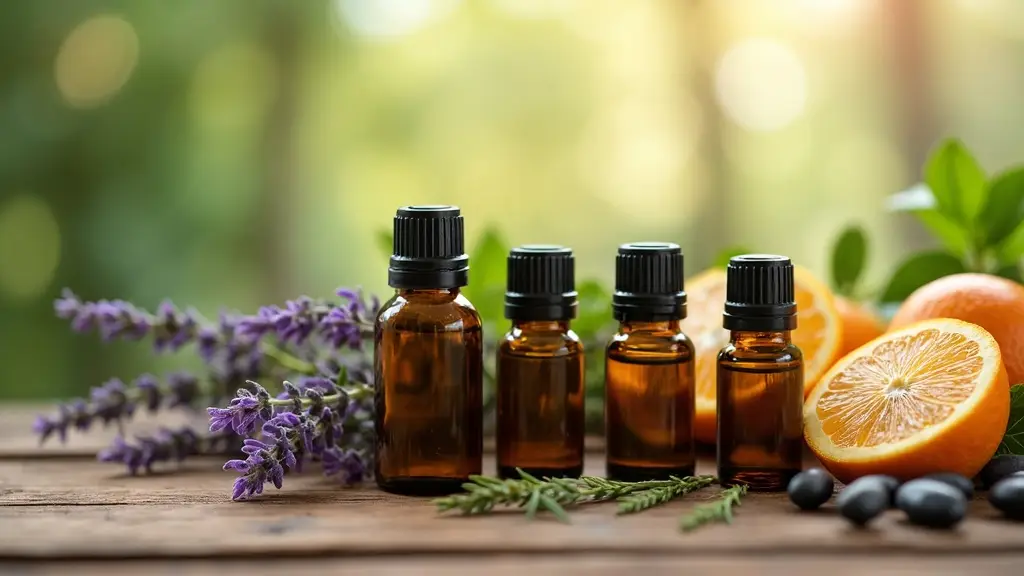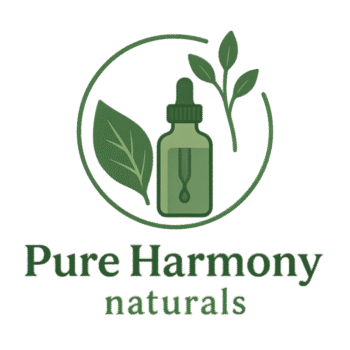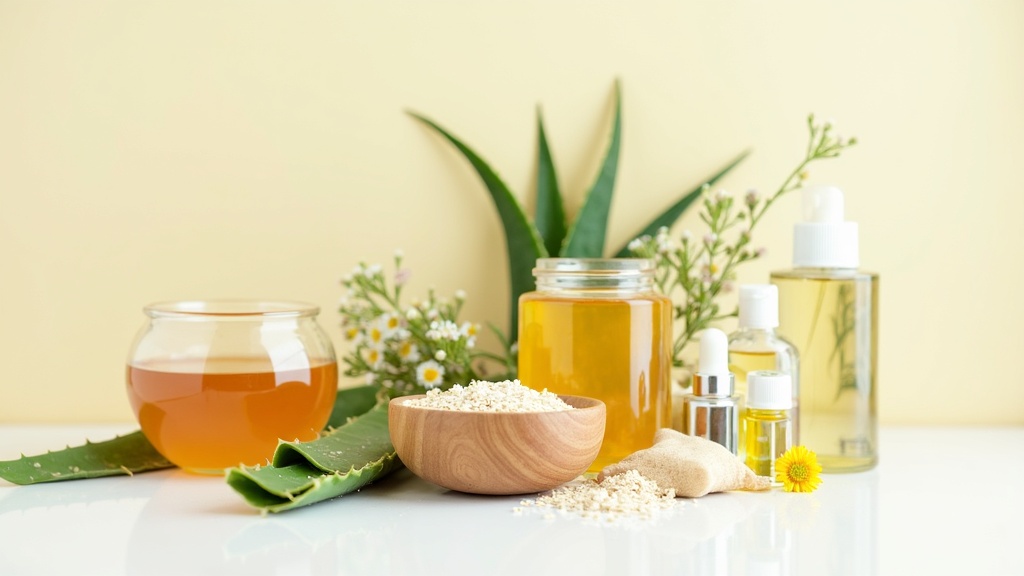If you’re even a little bit curious about natural skin care, you’ve probably noticed people talking about essential oils. These concentrated plant extracts pack a punch and are famous in the wellness world. From personal experience, adding a drop or two of the right oil into my routine has made my face feel pampered in a way my basic moisturizer couldn’t. But before jumping in, it’s helpful to have a handle on which oils really work, what they actually do for your skin, and a few things to consider before using them.

Why People Use Essential Oils in Skincare
Essential oils get their reputation for a reason. When used thoughtfully, they offer some pretty cool benefits for skin. These oils each have their own lineup of helpful properties; some target breakouts, others soothe redness, and a few make skin look extra glowy. Here’s why so many skin care lovers (including me) reach for them:
- Natural Antioxidants: Many oils help fight free radicals, which can age and damage skin.
- Soothing for Irritation: Oils like chamomile and lavender can calm itchy, inflamed skin.
- Targeted Moisturizing: Some oils deliver lightweight hydration, making them perfect for combo or oily types.
- Balancing Oil Production: Certain oils signal to your skin that it can chill with the excess oil, potentially helping with shine.
- Assisting with Acne: Tea tree is a classic for those annoying spots thanks to its bacteria-fighting power.
- Natural Scent: A subtle whiff of essential oils often makes your routine feel a bit more like a spa day.
It’s pretty easy to get excited about these perks, but the biggest win of essential oils is their multitasking ability. You can usually get several benefits from just one or two small bottles if you pick the right ones. Essential oils also fit nicely into all kinds of routines, from daytime serums to nighttime relaxation rituals. Their versatility and natural extraction make them especially appealing for those hoping to add a plantbased boost to their selfcare lineup.
Most Popular Essential Oils for Skincare (and What They’re Good For)
Walking into any natural beauty aisle feels like stepping into an apothecary; there are loads of choices. I’ve tried my fair share, and certain essentials come up again and again in skin care blends, serums, and DIY recipes. Here are my top six picks, with the reasons why they stand out:
- Lavender Oil
-
- ✔️ Calms sensitive, red, or irritated skin
- ✔️ Helps promote gentle healing for minor breakouts
- ✔️ Subtle scent is relaxing, great for night routines
- Rating: ★★★★★ (super versatile, gentle, and easy to find)
- Tea Tree Oil
-
- ✔️ Known for tackling acne and blemishes
- ✔️ Antibacterial and antifungal properties
- ✔️ Helps reduce oiliness without overdrying
- Rating: ★★★★☆ (strong, so needs to be diluted)
- Rosehip Seed Oil
-
- ✔️ Packed with vitamins A and C for brightening
- ✔️ Great for fading scars and evening tone
- ✔️ Leaves skin feeling soft and smooth
- Rating: ★★★★★ (gentle and works great for most skin types)
- Chamomile Oil
-
- ✔️ Calming on sensitive or reactive skin
- ✔️ Soothes redness, inflammation, or mild rashes
- ✔️ Nice for skin postsun or after too much exfoliation
- Rating: ★★★★☆ (mild, but pricier than some others)
- Frankincense Oil
-
- ✔️ Helps smooth and tone for a firmer look
- ✔️ Used for minimizing the appearance of fine lines
- ✔️ Subtle scent, works well mixed into creams
- Rating: ★★★★☆ (great antiaging option, pleasant aroma)
- Geranium Oil
-
- ✔️ Balances oil and supports clear skin
- ✔️ Natural astringent, tightens pores
- ✔️ Speeds up healing for small wounds
- Rating: ★★★★☆ (fresh scent, nice in DIY mixes)
These oils cover a lot of needs: hydration, soothing, anti-acne, and evening your complexion. Just remember, essential oils are super concentrated, and using too much can actually cause breakouts or irritation. Diluting them with a carrier oil like jojoba or sweet almond is really important for safe use. For those just exploring, start with one or two and track how your skin reacts for a couple of weeks. This method can help prevent common problems and allows you to adjust with confidence.
How Essential Oils Work for Skin
The secret sauce of essential oils is their active plant compounds, which provide a combo of skin benefits. When mixed into a carrier oil and applied, these compounds can help your skin by:
- Fighting surface bacteria (helpful against acne)
- Reducing inflammation and redness
- Boosting moisture retention
- Encouraging cell turnover and healing
Personal routines can vary a lot. I’ve noticed simple changes, like adding a few drops of lavender to my face oil, make my skin feel calmer after a rough day outside. Occasional use of tea tree saved me from monster breakouts without reaching for heavy-duty treatments. It’s worth noting that consistent use over time usually reveals the strongest effects. Plus, a little goes a long way; don’t overdo it!
Tips for Safely Using Essential Oils in Your Routine
Packed with power, these oils need to be treated with some care. Here’s what I always keep in mind:
- Patch Test First: Dabbing a small amount on your inner arm and waiting overnight helps spot any reaction.
- Go Light: Two to three drops mixed into a carrier oil covers your whole face, and less is totally more here.
- Avoid Eyes and Open Skin: Keep essential oils clear of your eyes and any cuts or scrapes.
- Store Properly: Sunlight and heat quickly break down oil potency; a cool, dark cabinet works best.
- Buy Quality: Look for pure, highquality oils from reputable sellers. Labels such as “100% pure” or GC/MS tested are worth checking for.
People who are pregnant, have allergies, or chronic skin conditions should check with a dermatologist before starting with any new oil. Your skin will let you know quickly if something’s not working, so any itchiness or redness is a sign to stop use. Remember: keeping an eye out for changes can help you catch sensitivity before it worsens.
Common Questions About Essential Oils in Skincare
If you’re new to this world, you probably have a few questions. Here are some answers based on my experience and a bit of research:
Can I put essential oils straight on my face?
Nope; most essential oils are far too strong for direct use. Mixing a few drops into a carrier oil(grape seed or Jojaba) is the safe way to go.
Do these oils clog pores?
Most essential oils are noncomedogenic when diluted (meaning, they won’t block pores). Your risk goes up if you use too much or skip dilution.
How often can I use them?
Most people do well using essential oil blends two or three times a week, but it’s okay to use less often, especially if you’re just starting out. Sensitive skin types might prefer spacing out applications even more. Always check your own results and adjust as you see fit.
Is there anyone who shouldn’t use essential oils on their skin?
Anyone with a history of allergies, sensitive skin, or specific medical concerns should talk with a doctor first. Kids and pregnant people are better off skipping most essentials due to skin sensitivity. It’s always a smart move to ask if you’re not sure.
The Takeaway: Getting the Most Out of Natural Oils
Using essential oils in skin care is a fun, customizable way to target your skin’s unique needs. They don’t fix every skin concern, but they can add noticeable benefits when chosen and used with care. Remember to look out for any irritation, stick to dilution, and try out a few different oils to find what your skin actually likes. I keep coming back to lavender and rosehip myself; they’re gentle, smell great, and keep my skin settled. For anyone looking to give their routine a natural spin, a little essential oil goes a long way. With a bit of patience, you just might stumble upon a plantbased secret weapon for your skincare adventure. And don’t forget: consistency, gentle experimentation, and tuning into your skin’s needs are key to making the most of what essential oils offer.


